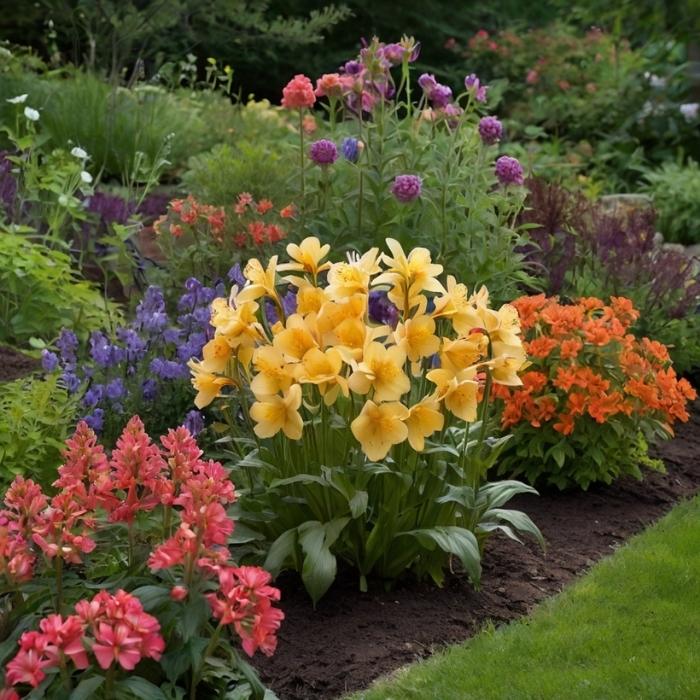The Ultimate Guide to Perennial Garden Flowers
Perennial garden flowers are the backbone of any stunning and enduring garden landscape. Their ability to regrow year after year makes them a favorite among gardeners seeking beauty, sustainability, and minimal maintenance. In this comprehensive guide, we will explore the best perennial flowers, their care tips, and how to create a flourishing perennial garden that blooms season after season.
What Are Perennial Garden Flowers?
Perennial flowers are plants that live for more than two years, coming back each growing season. Unlike annuals, which complete their lifecycle in one year, perennials grow roots that survive underground even during winter, enabling them to regrow each spring.
Some key benefits of perennial flowers include:
- Longevity: They offer years of color and growth.
- Low Maintenance: Once established, many perennials require minimal care.
- Variety: Available in diverse colors, shapes, and sizes to suit any garden style.
Top Perennial Flowers for a Stunning Garden
1. Black-Eyed Susan (Rudbeckia hirta)
This cheerful, daisy-like flower is a garden favorite due to its vibrant yellow petals and dark center. Black-eyed Susans are drought-resistant, making them an excellent choice for sunny areas.
- Light Requirements: Full sun
- Soil Type: Well-drained
- Bloom Time: Summer to early fall
2. Coneflower (Echinacea)
Coneflowers are known for their striking, spiky centers and drooping petals in shades of purple, pink, and white. They attract pollinators like bees and butterflies.
- Light Requirements: Full sun to partial shade
- Soil Type: Average, well-drained
- Bloom Time: Mid to late summer
3. Daylilies (Hemerocallis)
With blooms that last only one day, daylilies compensate by producing a profusion of flowers. They are extremely hardy and come in various colors.
- Light Requirements: Full sun to partial shade
- Soil Type: Loamy, well-drained
- Bloom Time: Early summer to late fall
4. Lavender (Lavandula)
Lavender is a perennial herb renowned for its fragrant flowers and calming properties. It thrives in hot, sunny climates.
- Light Requirements: Full sun
- Soil Type: Sandy, well-drained
- Bloom Time: Summer
5. Peonies (Paeonia)
Peonies are timeless classics with lush, fragrant blooms. They add an air of elegance to any garden.
- Light Requirements: Full sun
- Soil Type: Rich, well-drained
- Bloom Time: Late spring to early summer
Designing a Perennial Garden
1. Plan Your Layout
A well-thought-out layout ensures a balanced and visually appealing garden. Consider these tips:
- Group plants by height, placing taller flowers like delphiniums at the back.
- Use complementary colors for a harmonious look.
- Include a mix of early, mid, and late bloomers for continuous color.
2. Choose the Right Location
Most perennials thrive in well-lit areas with good drainage. Assess your garden’s sun exposure and soil quality before planting.
3. Mulch and Soil Preparation
Mulch helps retain moisture and suppress weeds, while enriched soil provides essential nutrients. Add compost or organic matter to improve soil health.
Caring for Perennial Flowers
1. Watering
Although perennials are hardy, consistent watering ensures they establish strong roots. Deep watering is recommended during dry periods.
2. Deadheading and Pruning
Removing spent blooms encourages plants to produce more flowers and maintain a tidy appearance. Cut back foliage in late fall to prepare plants for winter.
3. Fertilizing
Feed perennials with a balanced, slow-release fertilizer in early spring to promote vigorous growth and vibrant blooms.
Seasonal Tips for Perennial Gardens
Spring
Start by clearing debris and refreshing mulch. Divide overgrown perennials to encourage new growth and prevent overcrowding.
Summer
Regularly water and deadhead flowers to keep the garden vibrant. Monitor for pests like aphids and treat accordingly.
Fall
Cut back perennials after the first frost, leaving some seed heads for birds. Add a layer of mulch for winter protection.
Winter
While most perennials lie dormant, ensure adequate insulation with mulch. Avoid walking on frozen soil to protect roots.
Best Practices for Long-Lasting Beauty
- Rotate Plants: Avoid planting the same species in the same spot yearly to prevent soil depletion.
- Attract Pollinators: Incorporate native plants to draw bees, butterflies, and birds to your garden.
- Combine Annuals and Perennials: Use annuals to fill gaps and provide continuous bloom cycles.
Conclusion
A garden adorned with perennial flowers offers enduring beauty, sustainability, and a low-maintenance solution for every gardener. By choosing the right plants, designing an efficient layout, and following proper care practices, you can create a flourishing garden that delights year after year

